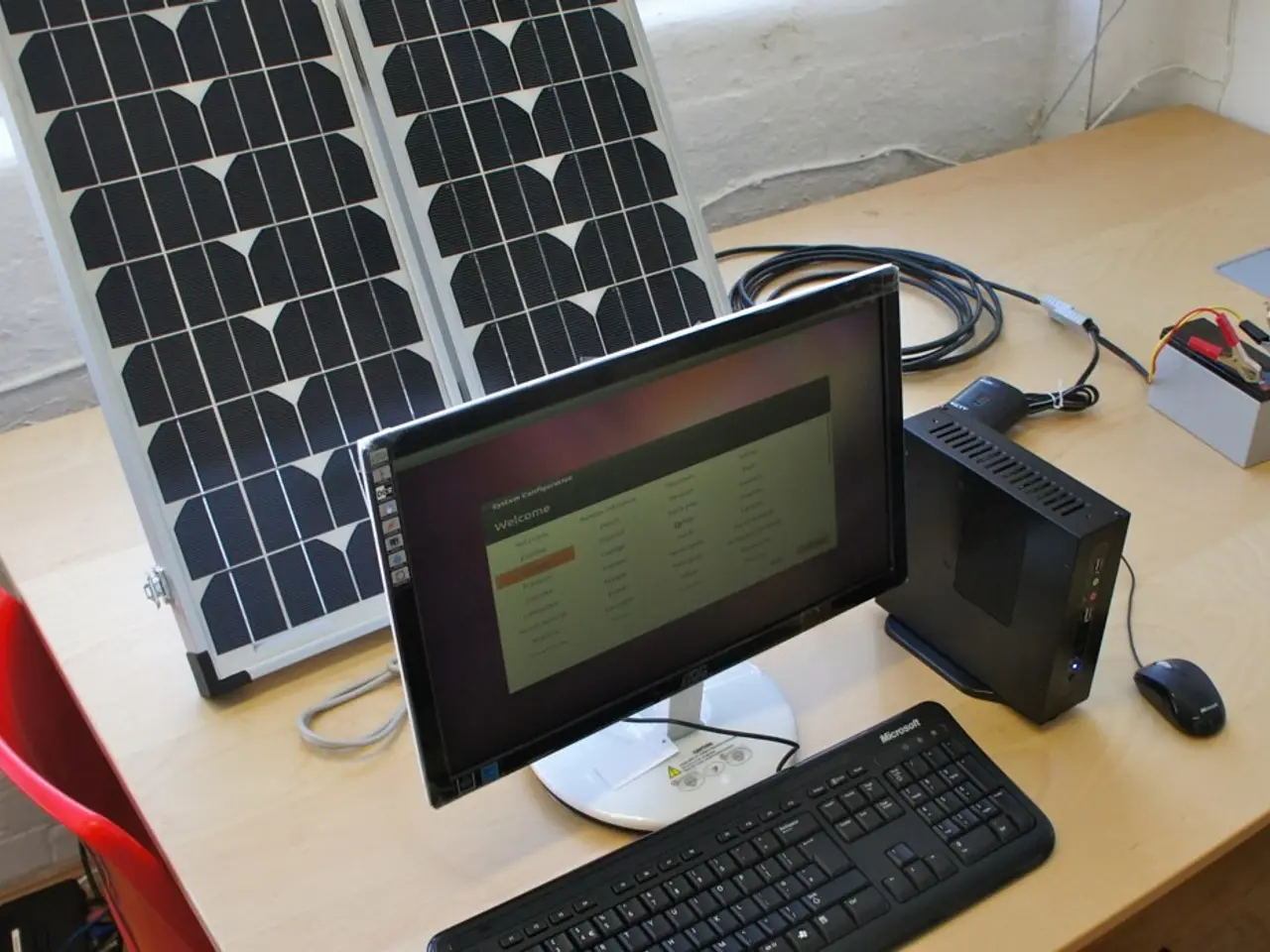China Breaks Global Record, Pushes Solar Energy Conversion to New Horizons, Amplifying the Attraction of Sophisticated Technology
China Breaks Solar Efficiency World Record, Paving the Way for Widespread Adoption of Renewable Energy
In a groundbreaking achievement, China has set a new world record in solar module efficiency, surpassing the previous record held by the University of New South Wales. The laboratory-tested efficiency rate of these Chinese heterostructure modules stands at an impressive 25.44%.
This breakthrough in solar technology is significant as higher efficiency in solar cells means less space is needed for solar installations. This reduction in area required for solar systems leads to lower costs and enhanced availability and scalability for general use.
The success in solar energy conversion was attributed to the technique of passivation, which was crucial in reducing defects, improving performance, and boosting the conversion rate of solar cells. Passivation involves coating the surface of the solar cell to enhance its efficiency.
The increased efficiency of solar cells due to passivation helps correct imperfections and overall boosts the efficiency of solar energy conversion. This improvement can lead to a reduction in the levelized cost of electricity (LCOE), making solar energy more cost-effective and accessible.
HJT cells, a type of solar cell technology, currently achieves cell efficiencies around 27.3% in laboratory settings, with commercial modules reaching approximately 22–23% efficiency. This efficiency rate places HJT cells among the most efficient silicon-based solar technologies available today.
In terms of market share, HJT is gaining traction as major manufacturers adopt N-type cells (which include HJT, TOPCon, and back-contact designs) due to their higher efficiency and better degradation performance. However, the overall market is still shared among many competing technologies, with TOPCon currently offering slightly lower costs at scale.
Looking to the future prospects, HJT technology is expected to maintain a strong role in high-efficiency solar markets. Continued efficiency improvements are reported, such as the record 27.3% for HJT cells by Longi in 2025. Moreover, HJT is used as a key component in developing tandem cells combined with perovskites, aiming at efficiencies above 30%, such as the 34.5% tandem perovskite-silicon solar cells also announced by Longi.
In summary, HJT solar cell technology is mature, efficient, and poised for further advancement. It remains in a competitive environment requiring continued innovation and cost optimization to expand its market share. The new world standard in solar energy conversion set by China signifies a significant leap forward in solar technology, potentially paving the way for more widespread adoption of sustainable energy solutions.
| Aspect | Current Status (2025) | Future Prospects | |------------------|-------------------------------------------------------------------|----------------------------------------------------| | Efficiency | ~27.3% at lab cell level; 22–23% at commercial module level[2][1] | Further gains via improved designs and tandem cells reaching 30%+[3] | | Market Share | Increasing adoption within N-type cell market segment[1][2] | Expected sustained growth in premium/high-efficiency segments | | Cost-effectiveness | Higher cost than TOPCon and P-type panels; improving with scale[2] | Potential for cost reduction; competitiveness may increase with price stabilization[2] | | Technological role | Core tech in tandem perovskite-silicon cells, bridging mainstream and cutting-edge tech[3] | Key enabler for next-gen high-efficiency solar solutions |
Sources: [1] Wood Mackenzie [2] SolarPower Europe [3] Longi Solar
The innovation in HJT solar cell technology, boosting efficiency up to 27.3% in lab settings, presents a significant step forward in solar technology, potentially driving the widespread adoption of renewable energy. As technology continues to evolve, solar cells equipped with passivation techniques are expected to further enhance the efficiency of solar energy conversion, thereby lowering the levelized cost of electricity and increasing the accessibility of this sustainable energy source.




